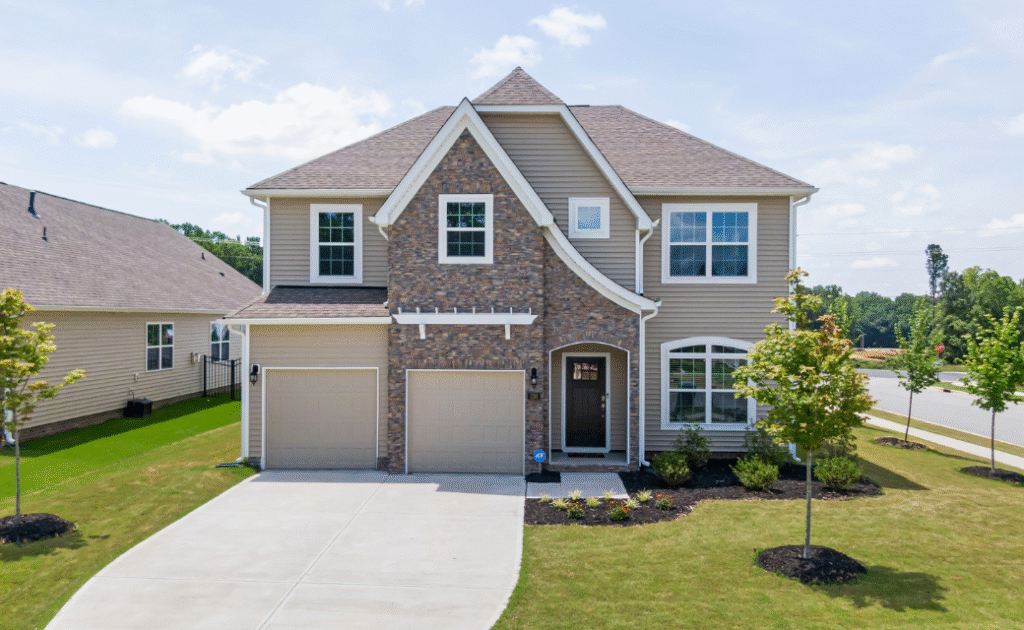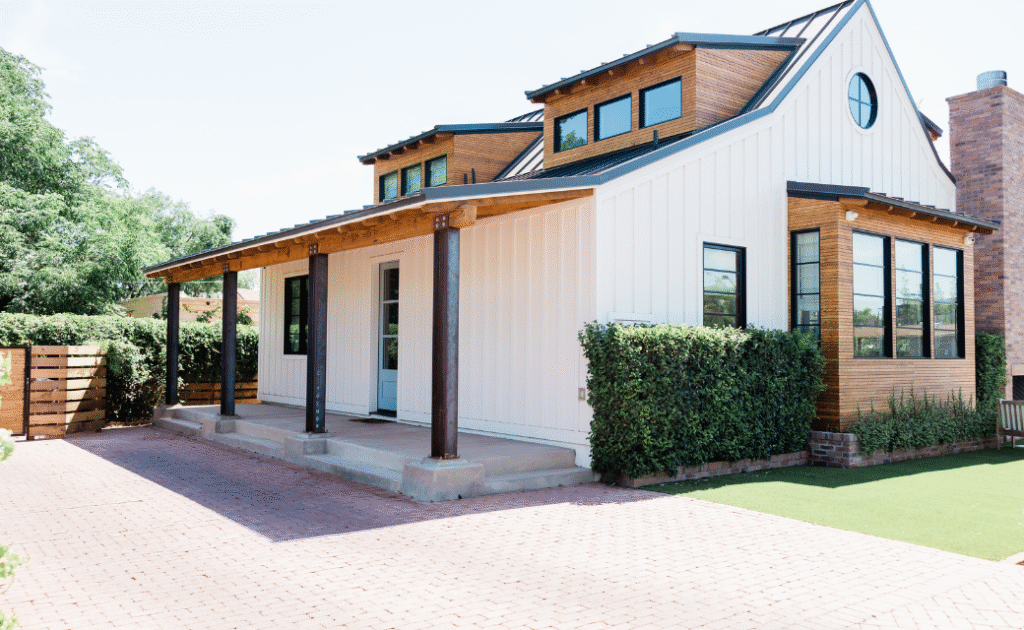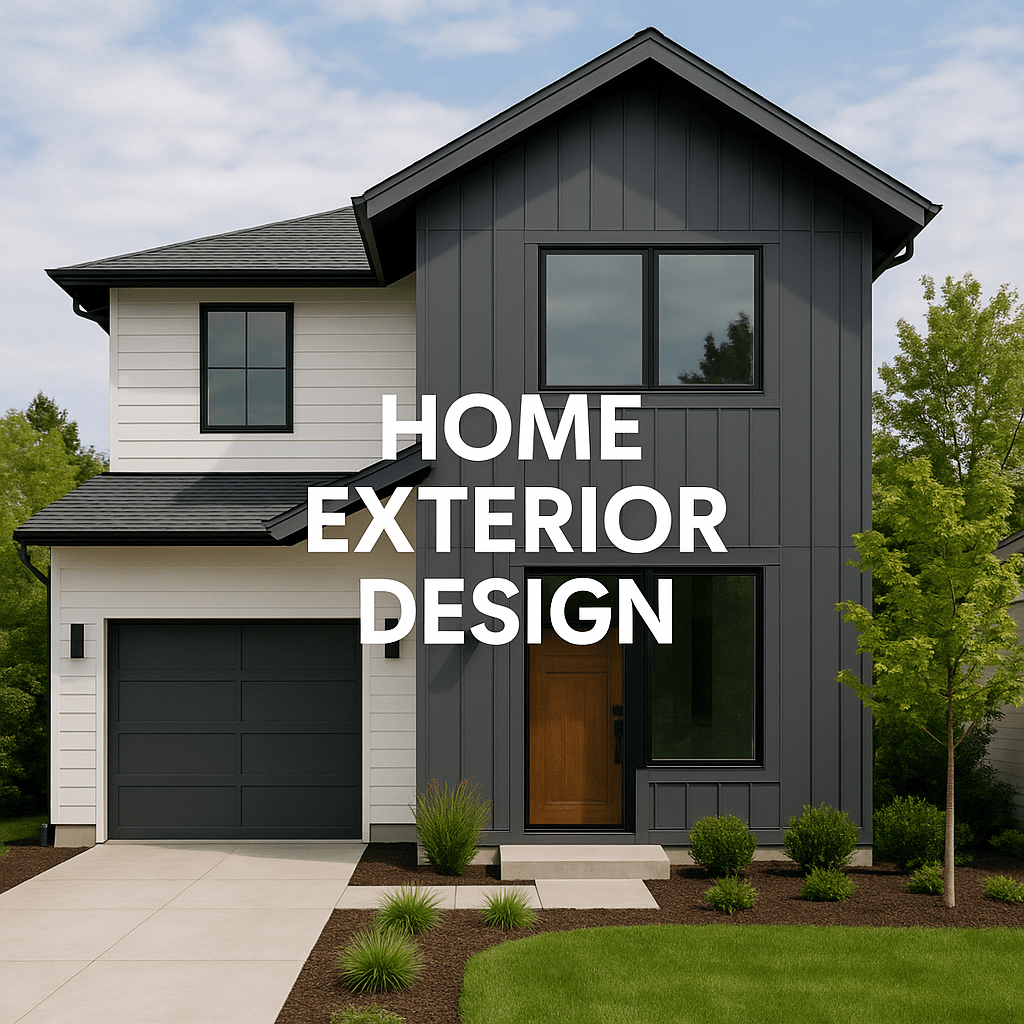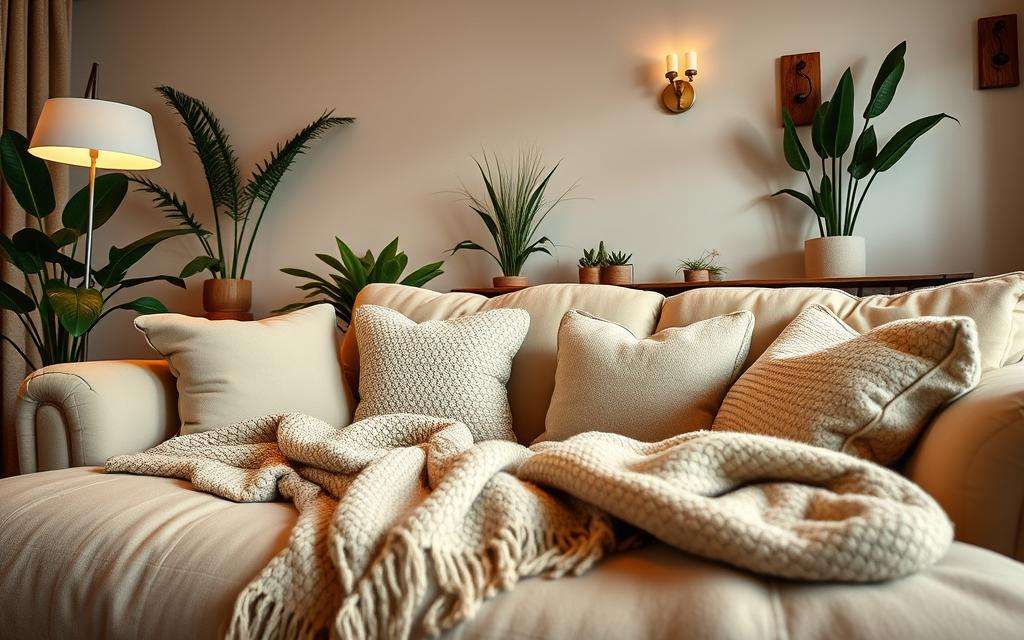Design for Home Exterior
The design for home exterior plays a crucial role in shaping a property’s identity, functionality, and value. This article explores essential principles, trending ideas, and practical tips for achieving a stunning and sustainable exterior design. Whether you’re renovating or building from scratch, understanding how to balance aesthetics, materials, and environment is key to creating a timeless first impression.
If you’re planning to build or renovate your home, the design for home exterior should be a top priority. Here’s a proven suggestion based on a real-world project—a modern villa in Islamabad—that shows how you can achieve both beauty and functionality with thoughtful planning.
1. Start with a Clear Concept and Design Brief
Begin by choosing a clear architectural vision. A minimalist approach works beautifully when paired with organic elements. Focus on:
- Clean horizontal lines
- Large glass panels for natural light
- Eco-conscious materials like wood, stone, and concrete
The goal should be to create a design that looks unique yet blends with the surroundings.
2. Choose a Balanced Facade Composition
Combine two to three materials to create depth and style. For example:
- Use white stucco for simplicity
- Add warm timber slats for texture
- Incorporate raw concrete for a modern, bold contrast
These choices help form a layered, visually appealing home facade design.
3. Incorporate Smart Shading Features
To manage sunlight and heat efficiently:
- Install louvers over windows
- Build deep roof overhangs
These shading features not only reduce heat but give your home a futuristic edge.
4. Go Green with Eco-Friendly Solutions
Integrate sustainability from the start:
- Use insulated breathable wall panels to maintain indoor comfort
- Create rain gardens to manage stormwater naturally
These steps make your home more efficient and environmentally responsible.
5. Strengthen the Indoor-Outdoor Connection
Design your home to extend seamlessly into the outdoors:
- Add large sliding doors opening to a veranda or garden
- Use covered outdoor sitting areas for year-round enjoyment
This improves ventilation, natural lighting, and the overall living experience.
6. Use Color and Texture Wisely
Stick to neutral color palettes to allow material textures to shine. Avoid too many bright colors; instead, use texture, shape, and contrast to make a statement. Let the architecture speak for itself.
7. Focus on Long-Term Value
A good design for home exterior not only looks beautiful—it performs well over time. In the case of the Islamabad villa:
- Energy costs went down
- Market value increased significantly
- Comfort and livability improved

home facade design
Home facade design means planning how the front of your house looks. It includes the walls, windows, roof, doors, and even the colors and lights you use. A good facade design makes your home look beautiful and welcoming. It shows your style and makes a strong first impression. You can choose modern, traditional, or mix styles, and use materials like wood, stone, or glass. The right design also helps protect your home from weather and saves energy.
modern home exterior
Modern home exterior means using clean shapes, simple lines, and smart materials to make your house look stylish and up-to-date. It often includes big glass windows, flat roofs, and neutral colors like white, grey, or black. Modern designs avoid too many decorations and focus on open space, natural light, and useful features. This style is perfect for people who like a clean, calm, and elegant look for their home. A modern home exterior also uses strong, eco-friendly materials that last longer and need less maintenance.
.If you want your house to look clean, stylish, and easy to maintain, a modern home exterior is a great choice. Here are some simple and smart suggestions based on a real home project in Karachi, Pakistan.
1. Choose Simple Shapes and Clean Lines
Modern homes look best when they avoid too many decorations. Use straight lines, square shapes, and a flat or slightly sloped roof. This makes your house look neat and modern.
2. Use Natural Light with Big Windows
Install large glass windows and doors. This allows sunlight to come in and keeps the house bright during the day. You’ll save energy and make your home feel fresh.
3. Pick Light, Neutral Colors
Use colors like white, grey, beige, or soft browns. These colors help keep the house cool in warm weather and give a soft, peaceful look from outside.
4. Add Simple Outdoor Lights
Put LED lights outside the house to light up the garden, entrance, or driveway. This improves safety and makes your modern home exterior look attractive at night.
5. Choose Strong and Easy Materials
Use cement plaster, concrete, and weatherproof paint. These materials last longer, need less cleaning, and stay strong in hot or rainy seasons.
6. Make Shade Where Needed
Add a roof edge, covered balcony, or small porch to give shade from sun and rain. This also adds style and comfort to your outdoor space.
7. Keep Outdoor Space Open and Green
A small garden or open area in front of the house makes the home feel bigger and more open. It adds beauty and supports a modern design.
Result You Can Expect
With these simple steps, you can create a modern home exterior that looks great and works well in daily life. Your house will stay cooler, use less electricity, and feel more relaxing. And best of all—it will impress every guest who visits.
Understanding the Importance of Design for Home Exterior
First Impressions Matter
The outside look of your home is the first thing people see. Whether it’s a visitor, a neighbor, or a potential buyer, the exterior tells a silent story about your home. This is what we call curb appeal—how attractive and welcoming your home looks from the street. A well-planned design for home exterior gives your property a strong, lasting first impression. It doesn’t need to be flashy—clean lines, fresh paint, and thoughtful landscaping can leave a positive visual memory in anyone’s mind.
Boosting Property Value with Exterior Design
A great exterior is not just about looks—it directly affects your home’s market value. Homes with clean, stylish, and modern exteriors often sell faster and for more money. Real estate experts agree: houses with well-maintained and attractive exteriors get more attention from buyers and often receive higher offers. By investing in a good design for home exterior, you’re also making a smart financial decision.
Key Elements to Consider in Design for Home Exterior
Architectural Style and Harmony
One of the most important steps is choosing a design that matches your home’s overall shape and architecture. For example, a modern home with flat roofs and large windows will look best with a minimalist, clean-lined exterior. On the other hand, a colonial-style house looks better with symmetrical layouts, detailed trims, and classic touches. Your design for home exterior should always feel connected to the building’s structure. Mixing too many styles can create confusion and reduce visual appeal.
Exterior Color Schemes
Colors play a big role in how your home looks and feels. Earth tones like browns, beiges, and greens are great for creating a natural, calm look. White is a timeless choice for clean and elegant homes, while bold colors like deep blue or charcoal can give a modern edge. When choosing your color scheme for your home exterior design, make sure the colors go well with the surroundings—your neighbors’ houses, trees, streets, and even the sky.
Landscaping and Outdoor Spaces
A well-designed garden or yard is just as important as the walls and roof. Landscaping includes everything outside your house—plants, grass, walkways, patios, and even rocks. Using native plants that grow easily in your area makes your garden easier to maintain. A symmetrical layout with balanced flower beds, green lawns, and neat paths improves the entire design for home exterior. Hardscaping elements like stone walkways or outdoor seating areas also help create an inviting outdoor environment.

Material Selection in Design for Home Exterior
Choosing the Right Cladding
Cladding is the material used to cover the outside walls of your house. It’s important because it protects your home and adds beauty. Different materials give different looks and feelings. Wood brings warmth and a natural feel. Metal offers a sharp, modern style. Stone looks strong and luxurious. Always choose materials that suit your weather—what works in a dry climate might not work in a rainy or coastal area. Good home facade design starts with the right cladding.
Roofing Materials and Styles
Your roof is one of the most visible parts of your home from the outside. It must look good and work well. Common roofing materials include tiles, shingles, metal sheets, or even concrete slabs. The color, shape, and slope of the roof all affect the overall design for home exterior. Overhangs (the edges of the roof that go beyond the walls) provide shade and give a neat, finished look.
Enhancing Curb Appeal with Lighting and Fixtures
Outdoor Lighting Placement
Lighting outside your home does more than just help you see at night—it adds mood, depth, and beauty to your design. Soft, warm lights along walkways, porches, and gardens make the house feel cozy and safe. You can highlight special features like plants, walls, or the front door. Good lighting design can take your home exterior design to the next level with just a few simple changes.
Doors, Windows, and Shutters
These parts of your home are both functional and decorative. A bold or artistic front door can be the centerpiece of your exterior. Windows in different shapes and sizes can make the home look more open and modern. Shutters, even when not functional, add charm and complete the look. Every detail helps improve the full design for home exterior.
Sustainable Design for Home Exterior
Eco-Friendly Materials
Many people now care about building homes that are good for the environment. That means using eco-friendly materials like bamboo siding, recycled metal, reclaimed wood, or natural stone. These materials are not just good for the planet—they also look great and last long. Choosing sustainable options shows care for both style and the future.
Smart Water Management
If your home has a garden or open area, water use is something to plan for. Using sloped landscapes, rain gardens, and drip irrigation systems helps save water and manage heavy rains. These systems are also good for plant health and prevent flooding or erosion. Adding water-wise planning to your home exterior design makes it not only beautiful, but also smart and sustainable.
Trends in Modern Design for Home Exterior
Minimalist Facades
In big cities and modern homes, less is more. Minimalist designs focus on straight lines, plain surfaces, and simple shapes. Colors like white, grey, or soft beige are commonly used. This trend is growing fast in places like Dubai, Islamabad, and Lahore. It makes your home look clean, modern, and elegant. A minimalist home exterior is easy to maintain and always in style.
Mixed Material Combinations
Modern homes often mix different materials to create visual contrast. For example, combining stone with wood or glass with steel. This adds depth and style to the home facade design. The secret is balance—too many materials can look messy. Pick two or three that work well together.
Mistakes to Avoid in Exterior Design
Ignoring Climate and Environment
One of the biggest mistakes is choosing materials or designs that don’t match your local climate. For example, wooden cladding in a rainy area will need a lot of care. Always choose weatherproof materials, good insulation, and smart window placements that fit your environment. This helps your home look better and last longer.
Overcomplicating the Design
Trying to mix too many styles or colors can ruin your home’s look. Don’t add too many shapes, trims, or decorations. Keep it simple and pick one theme. A clean and clear design for home exterior will always look better and feel more peaceful.
Tips to Achieve a Stunning Design for Home Exterior
Work with Professionals
Hiring an architect or designer might cost more in the beginning, but they can save you time, money, and mistakes in the long run. These experts know what materials to use, how to balance shapes and colors, and how to bring your vision to life.
Use Design Software
Today, you don’t need to guess what your home will look like. Free tools like SketchUp, Houzz, and others let you create 3D designs of your home exterior. You can try different layouts, colors, and materials before making any changes in real life.
Stay True to Your Theme
Whether you choose a modern, rustic, traditional, or mixed theme—stick with it. Use the same design language for the walls, roof, windows, garden, and even the mailbox. A theme-based home exterior design gives your house a complete and professional look.
Conclusion
Investing in a thoughtful design for home exterior elevates the overall experience of homeownership. From small upgrades to full-scale renovations, your exterior design should reflect your personality, embrace functionality, and meet long-term goals. A well-designed exterior welcomes not just guests, but also peace of mind and lasting value.



